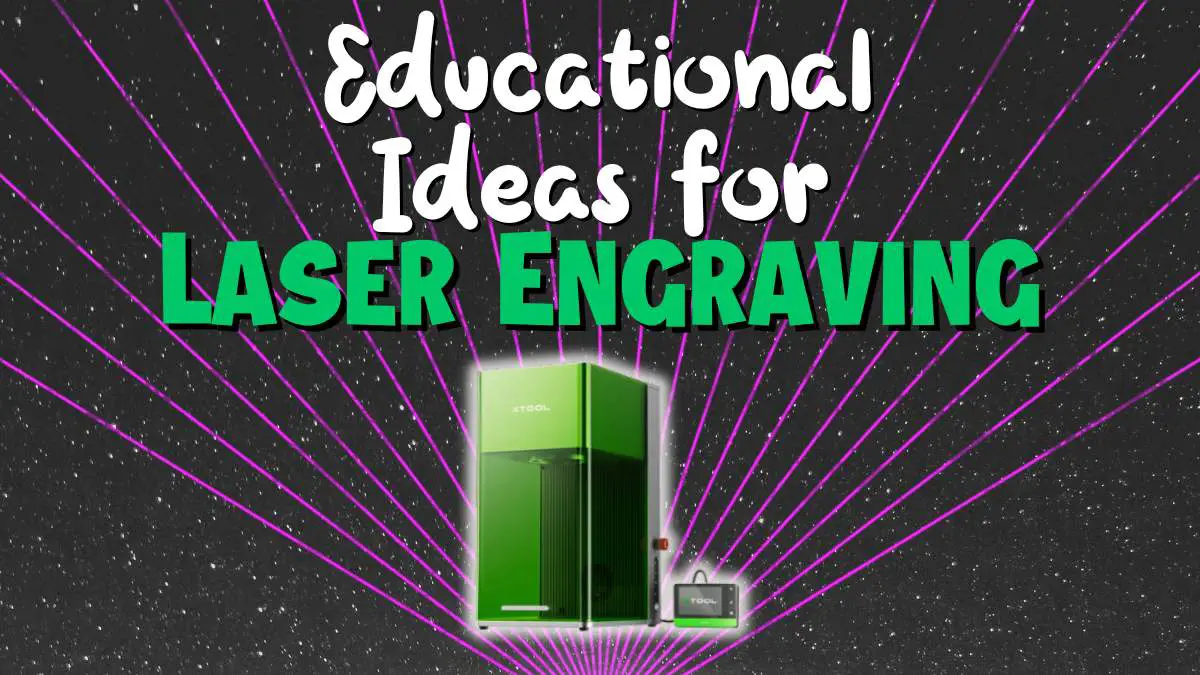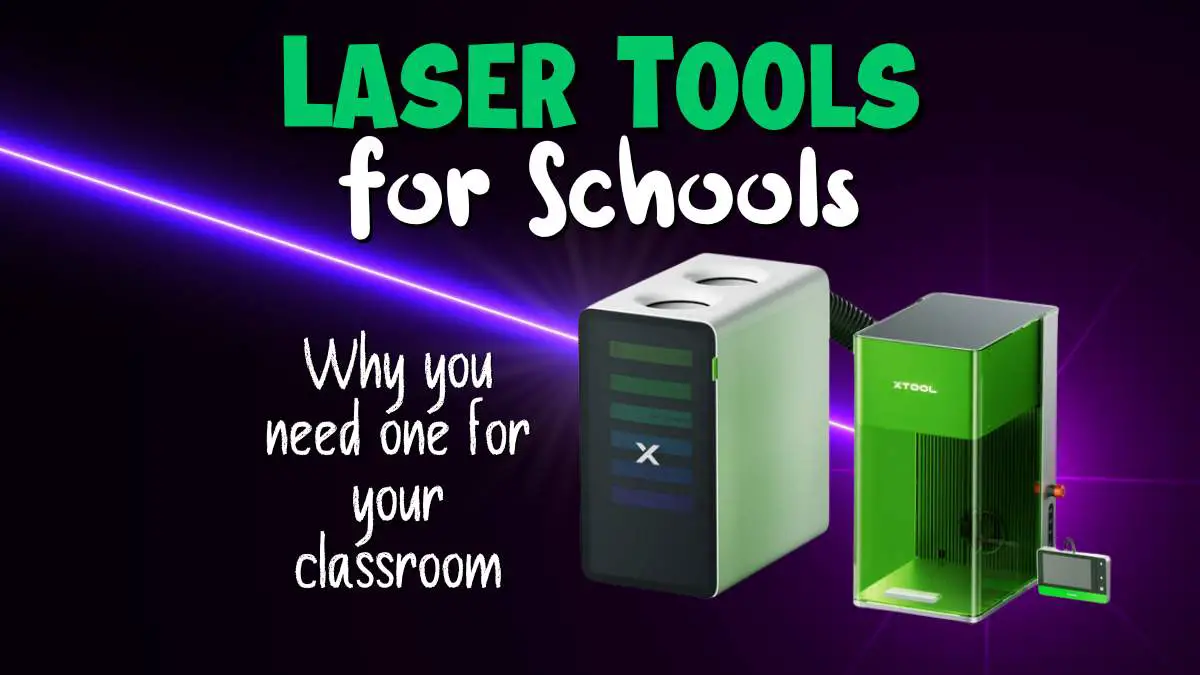Kids love pipe cleaners! They’re cheap, colorful, and fun to play with. In this article, we’ll share our top ideas for making pipe cleaner crafts awesome by incorporating some STEM activities for kids.
STEM teaching integrates the subjects of Science, Technology, Engineering, and Mathematics with a unique learning approach, presenting hands on and interactive activities and projects for kids. Here are some engaging STEM activities with pipe cleaners that can educate students of all ages. Let’s explore!
Counting
Tower Building
Tower Building (Older Kids)
Grow Crystals
Crystal Letters and Shapes
Magic Pipe Cleaner Jar
Balance Sculpture
Light-Up Circuit
Bug With Light-Up Eyes
Learning To Count With Pipe Cleaners And Beads
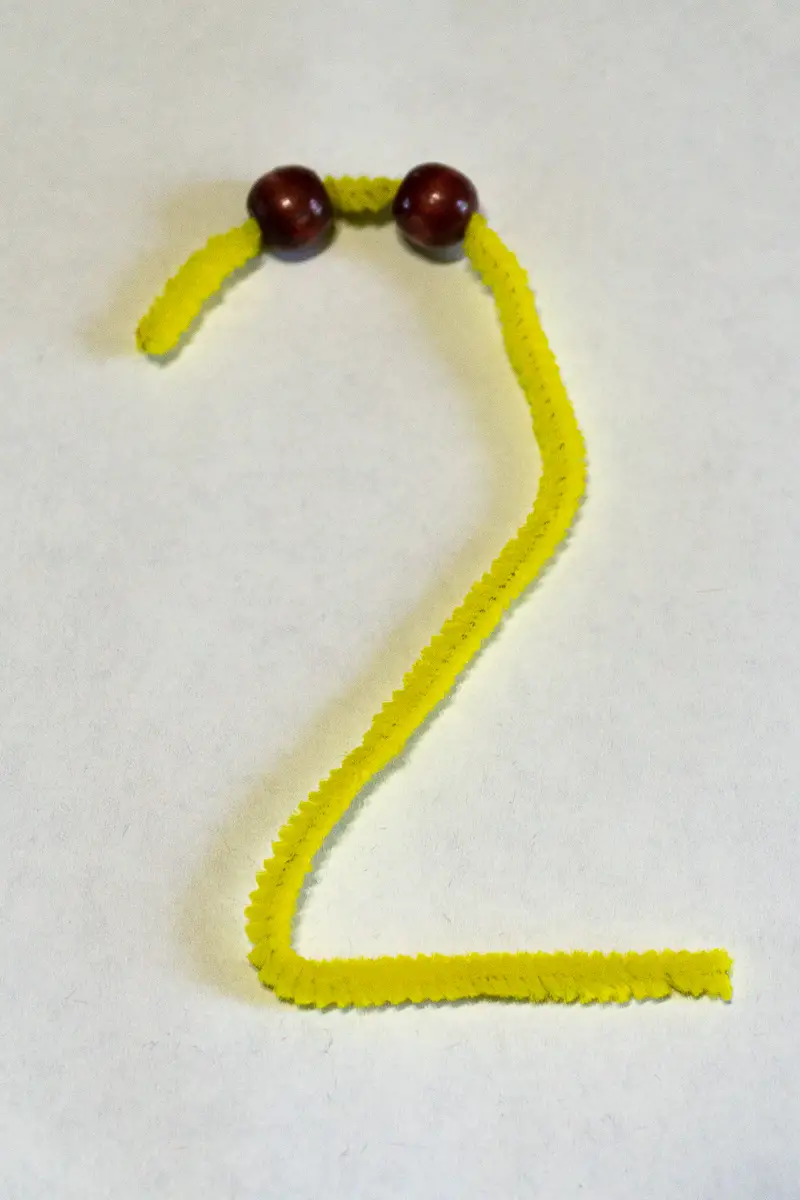
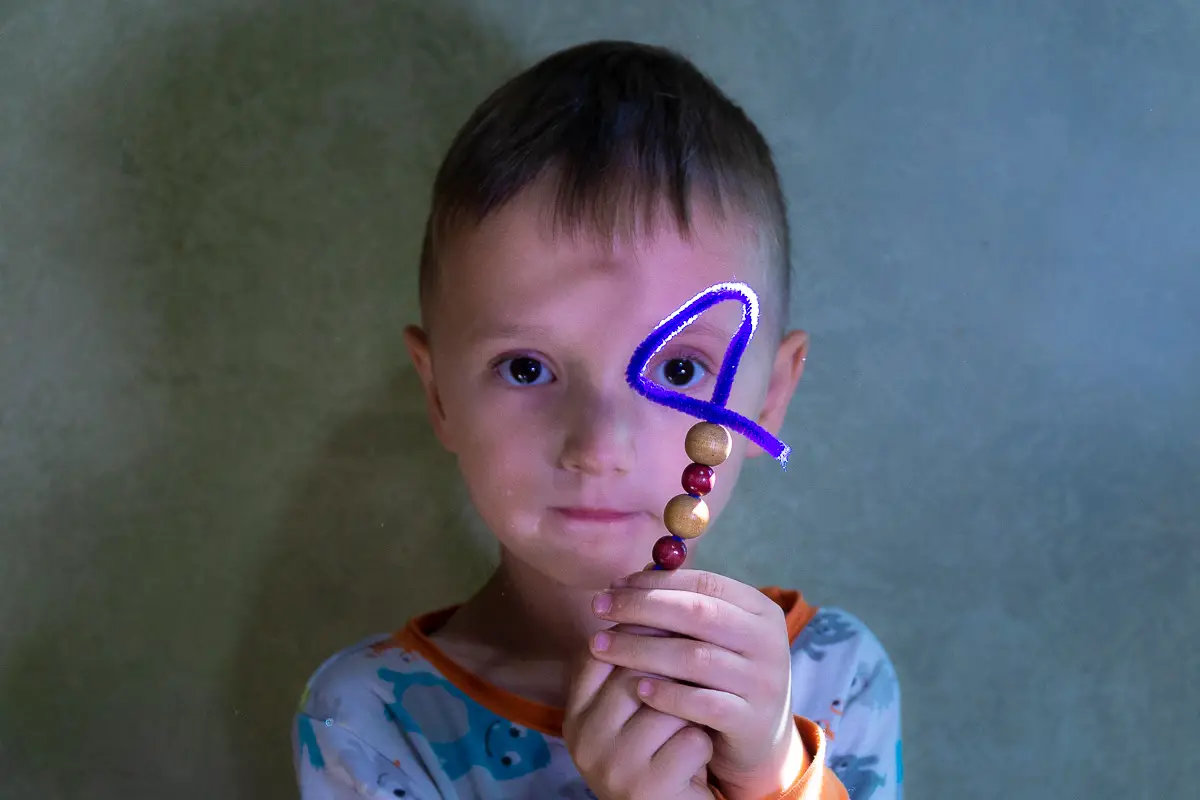
This is suited to preschoolers and little ones in Kindergarten to build their math ability and improve fine motor skills. All you need is colorful pipe cleaners and beads. Help your kids(s) bend the pipe cleaners into numbers. Have the kids thread the corresponding number of beads onto pipe cleaners to match the number. (This is great to work out their motor activities skills too!)
Once all the numbers have the correct number of beads, you can work on concepts like addition, subtraction, and odd & even numbers. The children will have brightly colored learning tools for math lessons.
Highest Tower STEM Activity With Pipe Cleaners
This is a fun activity for kids in grades 2-5. It teaches kids engineering skills, how to research topics, creativity, and perseverance.
Groups of 3-4 kids are given an equal number of pipe cleaners for a competition to see who can make the tallest tower. If you’re working at home, challenge your child to build the tallest tower they can.
Students must research designs and consider the constraints. Challenge them to sketch out their design first, then build the tower. They should note their failures and successes. Give the kids an opportunity to improve on their designs and share their processes with the class.
Tower Building STEM Activity With Pipe Cleaners
We’re going to take our tower building activity and make it the basis of an engineering activity suited for kids from the fourth to twelfth grades. Kids will need to plan and work together as a team. The added challenge comes from constraints and limited resources to complete this STEM challenge. This is a great classroom activity to add some elements that simulate “real world” issues.
Each group of 3-4 students uses 15 pipe cleaners to build a free-standing tower in 5-10 minutes. Seems simple, right? Well, not everything goes as we plan.
After about 2-4 minutes, stop the students and explain that sometimes engineers lose resources and have to work with constraints. To emulate that, everyone must work with one arm behind their backs for the remainder of the time.
After another 2 minutes, stop them again and tell them they may not speak. This represents not being able to communicate with foreigners in the global marketplace and overcoming language barriers.
They’ll have one minute to finish. Students have to learn to problem-solve, work in a team, and plan for the structure to be a success.
Making Crystal Letters and Shapes With Pipe Cleaners
This fun science activity is suitable for kids in Kindergarten to the early elementary grades.
- Pipe Cleaners
- Borax (9 Tablespoons)
- Hot Water (3 cups)
- Several glass jars
- Food coloring (optional)
- Skewers or chopsticks
Using borax, pipe cleaners, and a few other household items, the kids learn the science behind the formation of crystals. The activity will take 30-45 minutes to set up.
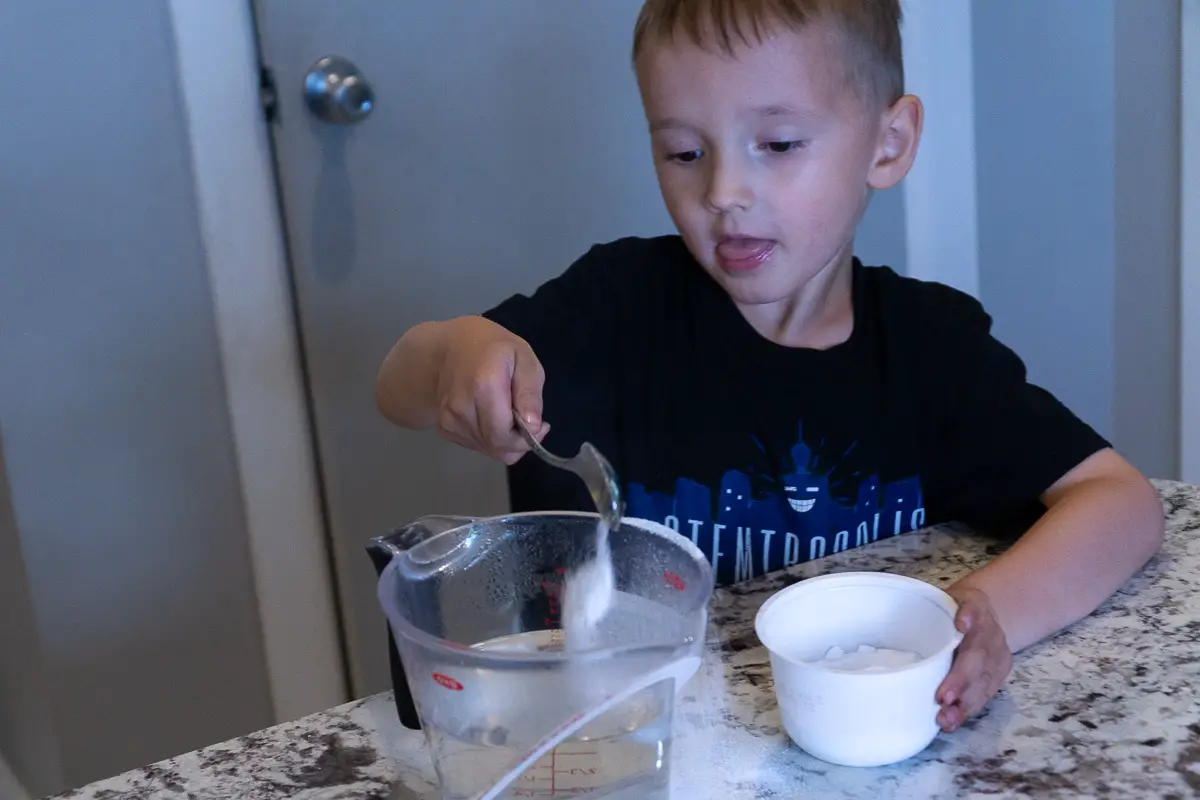
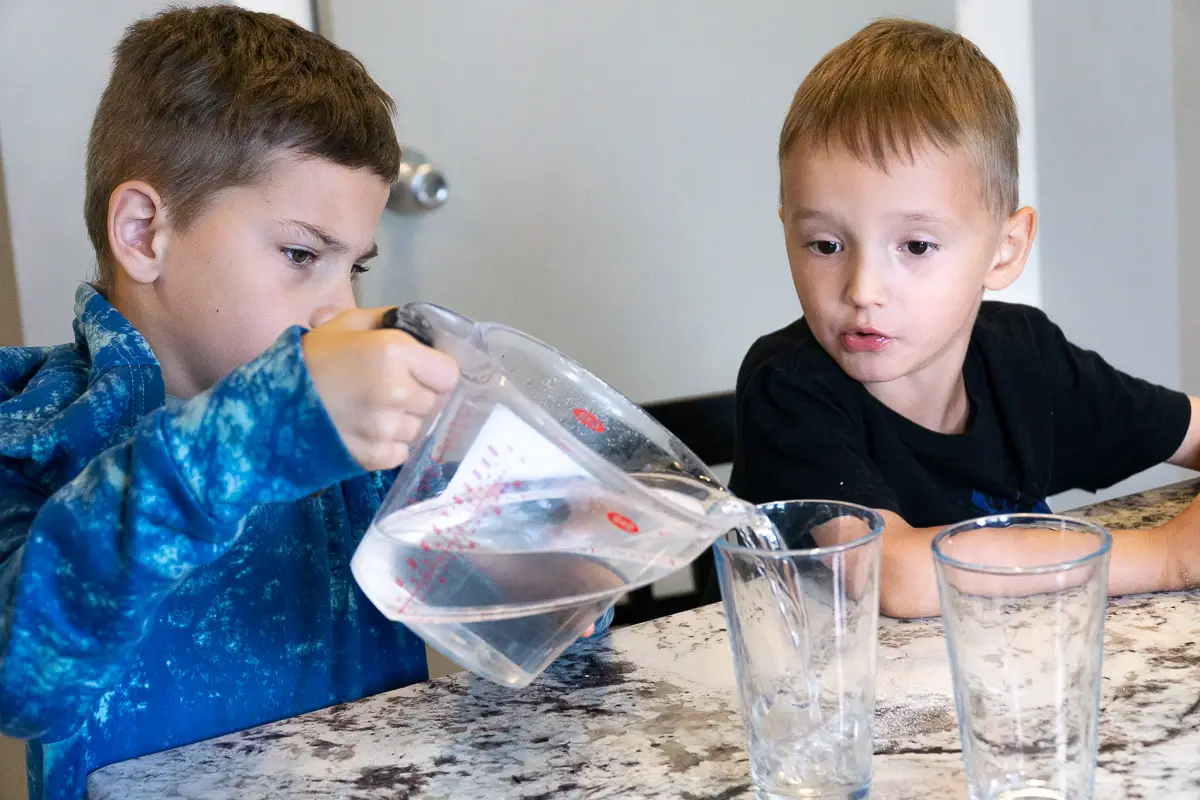
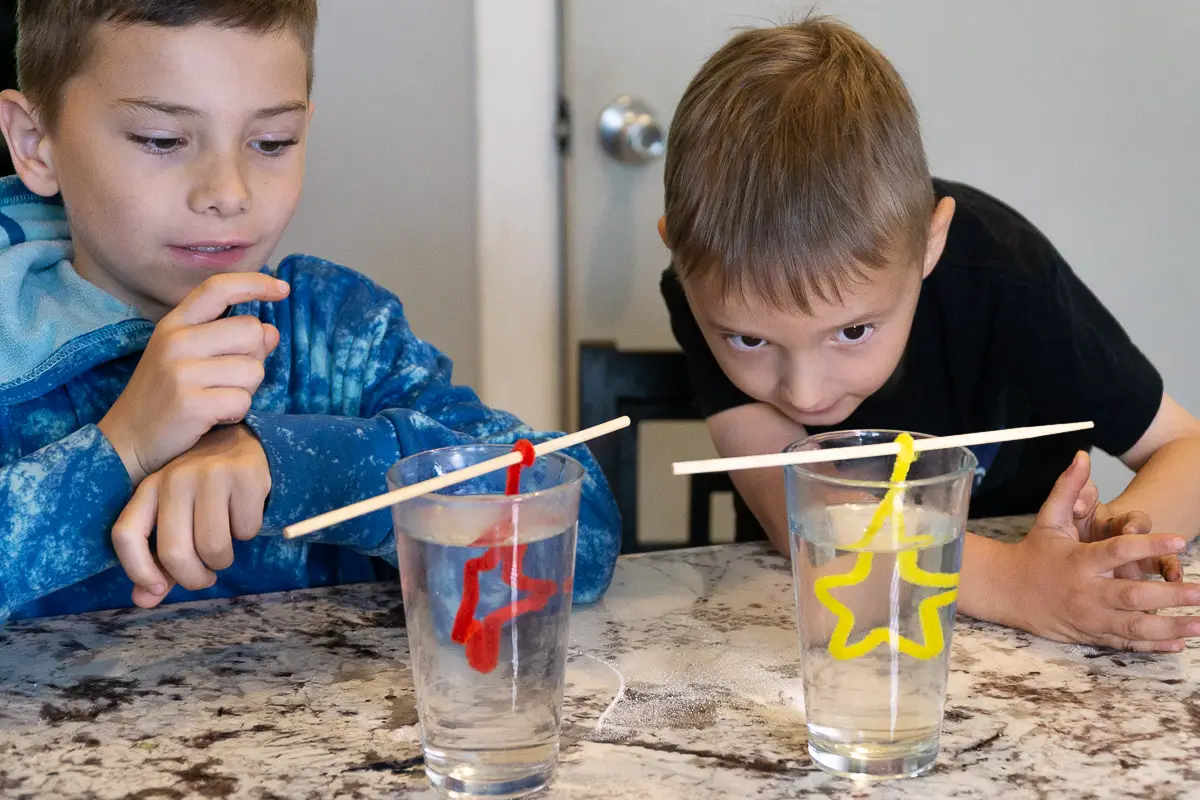
- Use pipe cleaners to make shapes or letters (you can make the letters to spell your name. Our kids wanted stars.)
- Heat 3 cups of water to boiling
- Dissolve 9 tablespoons of borax in the hot water
- Pour the water and borax solution into each jar or glass
- Add food coloring to each container if you’d like different colors – We let the crystals form on our colored pipe cleaners for this activity.
- Hang the pipe cleaners from the skewer or chopsticks so they hang into the jar. Make sure the pipe cleaners do not touch any sides of the jar.
- Leave the pipe cleaners sit in the jars overnight. (You can check in a few hours to see the crystals start to form.)
By morning, the pipe cleaner shapes should be coated with sparkling colored crystals. Spell out your name, make decorations, or hang them up in a sunny window.
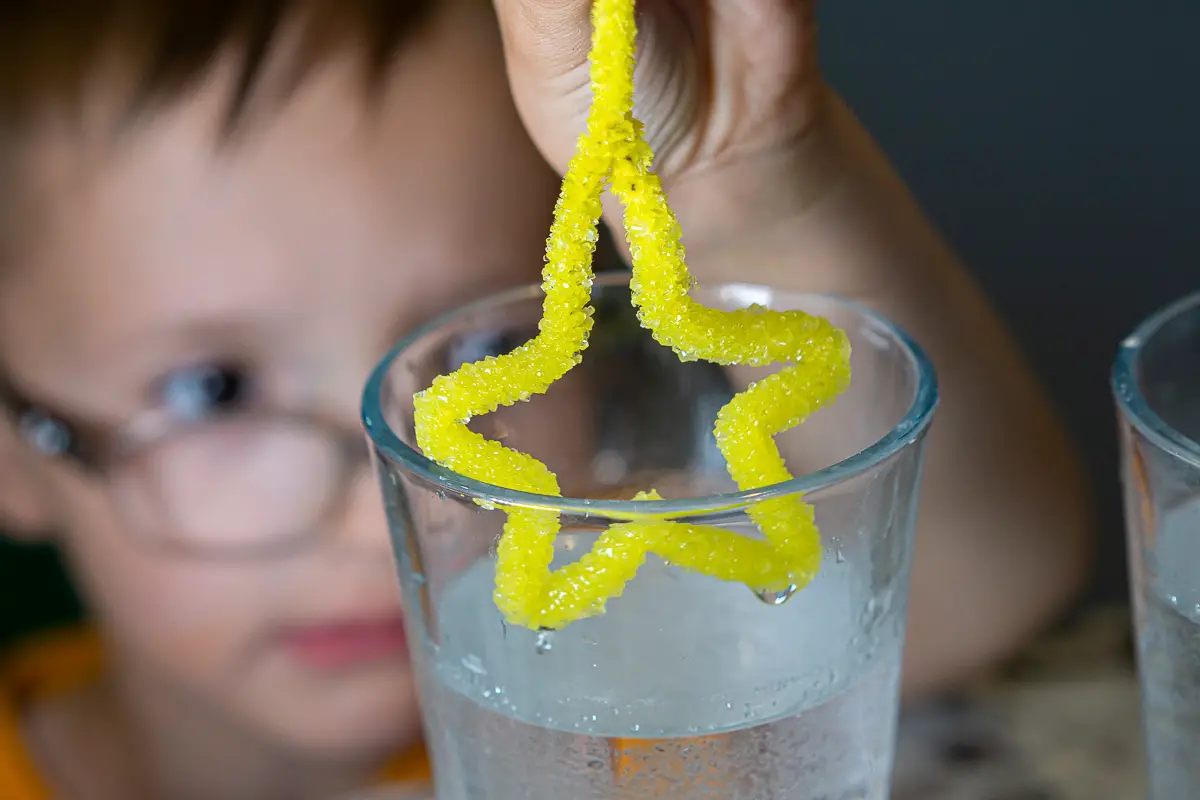
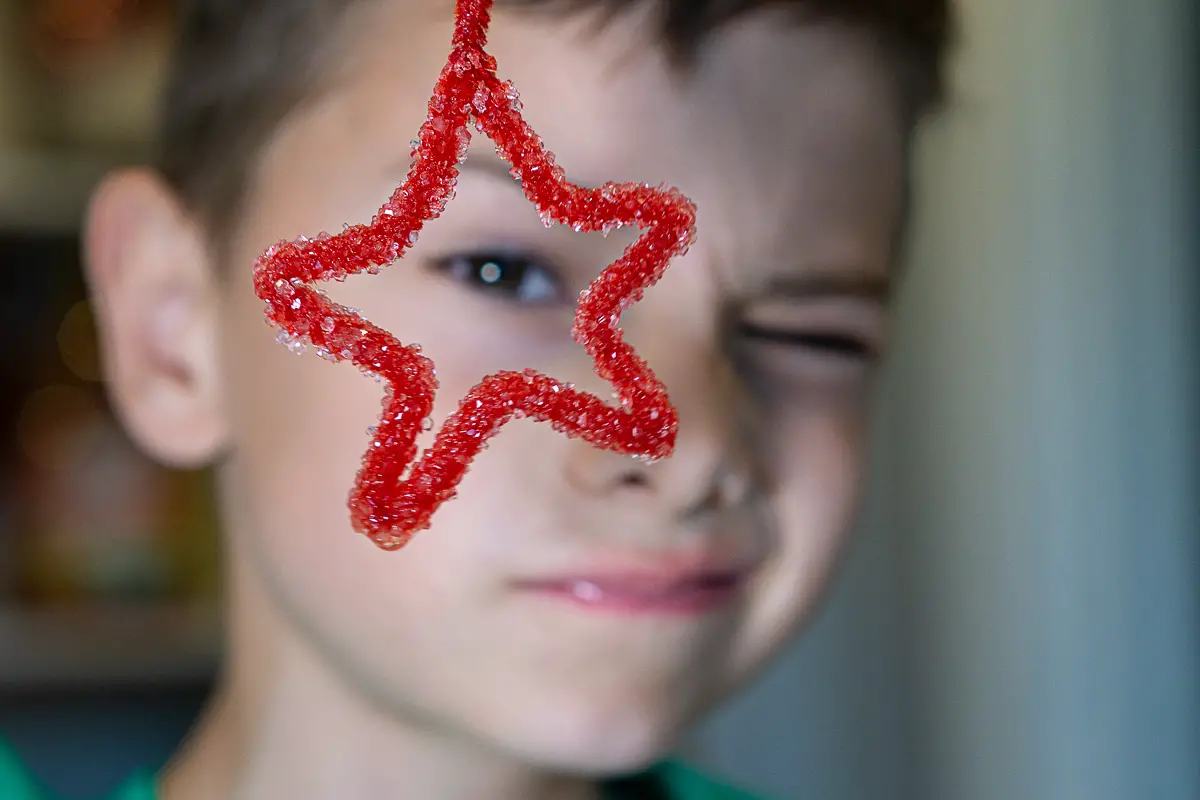
How do the crystals form?
When we dissolve a substance in water, the result is called a suspension. If you use powdered drink mix and stir it into water, you’re making a suspension.
In this case, the borax is dissolved in the water. The resulting suspension can only hold so much borax. The extra particles settle out of the suspension when the water cannot hold any more. (Just like if you add too much powder to your drink, some of it settles on the bottom of your glass.)
Borax particles will start to crystalize once they leave the solution. Our pipe cleaners are a perfect place for the crystals to stick to.
Related Post – We use this same crystallization method to make edible rock candy. Check find out how in our Cooking and Kitchen Science Activities.
Children learn about crystallization, what a suspension is, and what happens when the sediment settles on a surface.
Check out our kitchen science experiments!
Pipe Cleaner STEM Activity To Grow The Best Crystals
This project delves deeper into the science of crystallization to find the optimum temperature for growing the best borax crystals. It would be suited to seventh to ninth graders.
Items needed would be
- two pipe cleaners
- two pencils (or chop sticks)
- two large glass jars
- a large bowl
- a tablespoon
- plastic wrap
- ice cubes
- Borax
- water
- a cooking pot
Follow these steps to grow crystals on pipe cleaners:
- Attach a pipe cleaner to each pencil that will rest on top of the jar, shortening the pipe cleaner so that it doesn’t touch the bottom of the jar
- Boil water in the pot
- add 1 tablespoon of borax for every cup of water until no more borax will dissolve in the liquid.
- Pour equal amounts of the solution into the two jars, about three-quarters full
- Suspend the pipe cleaner in the liquid, and cover with plastic wrap
- Half-fill the bowl with ice cubes
- Add water until it reaches about three-quarters full
- Leave one jar on the countertop at room temperature and place the other in the bowl of ice
- Let them sit for about 5 hours.
By then, crystals should have formed on both pipe cleaners. What do you notice?
You should notice that the crystals formed in the jar kept in ice water developed more crystals, but they were smaller than those that grew at room temperature. Although there were fewer crystals in the jar on the counter, they were bigger, and their shape was more cube-like.
This shows how temperature affects the growth of the crystals.
Make A Magic Pipe Cleaner Box
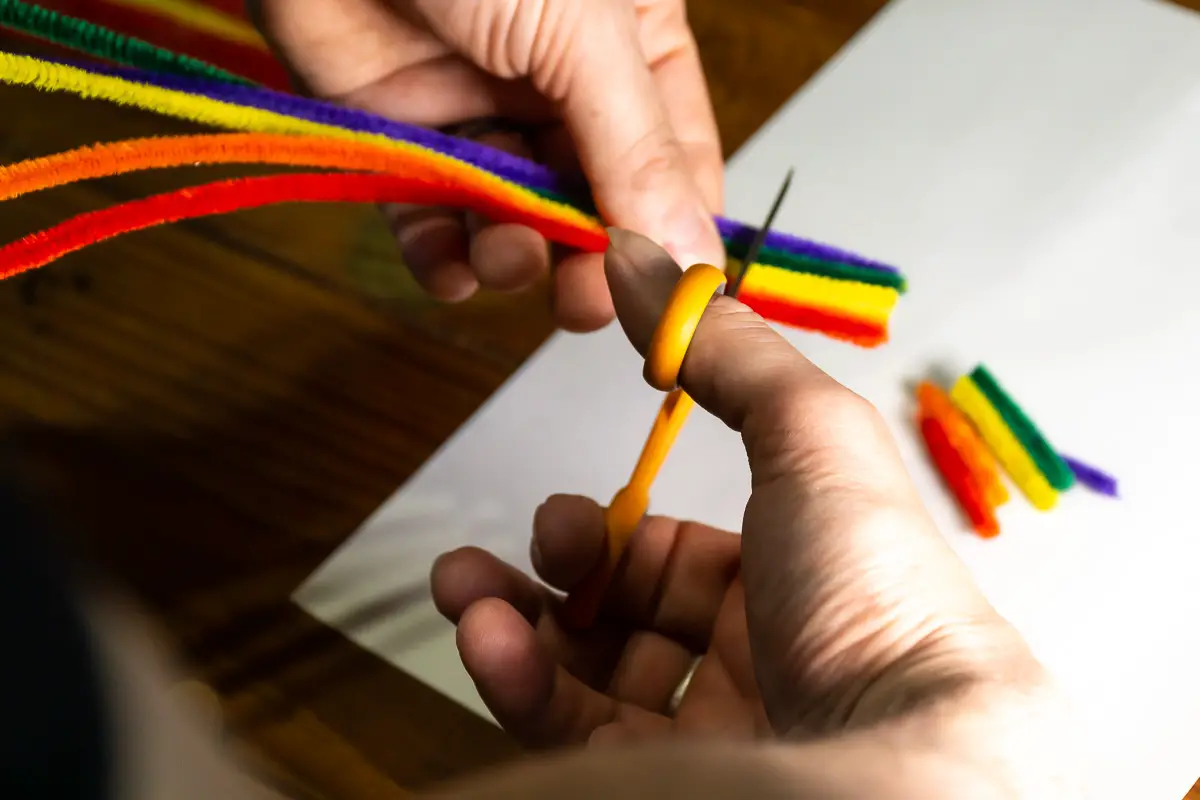
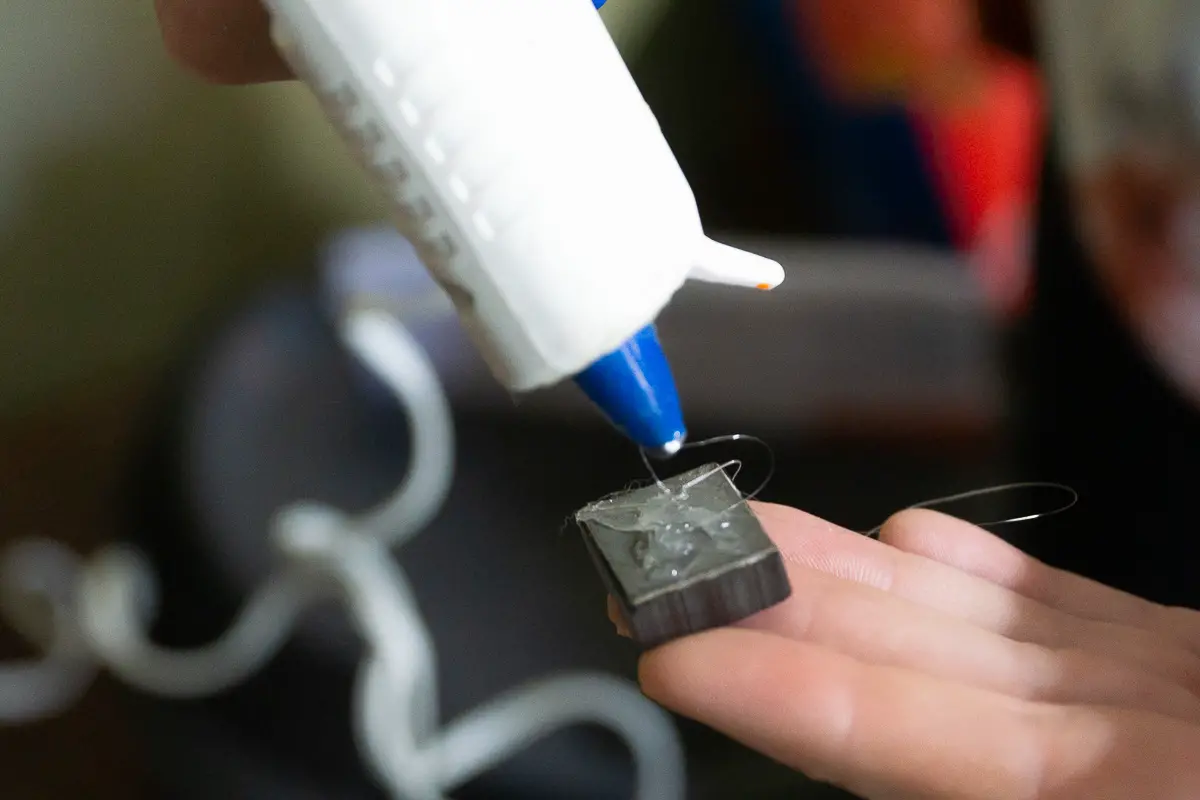
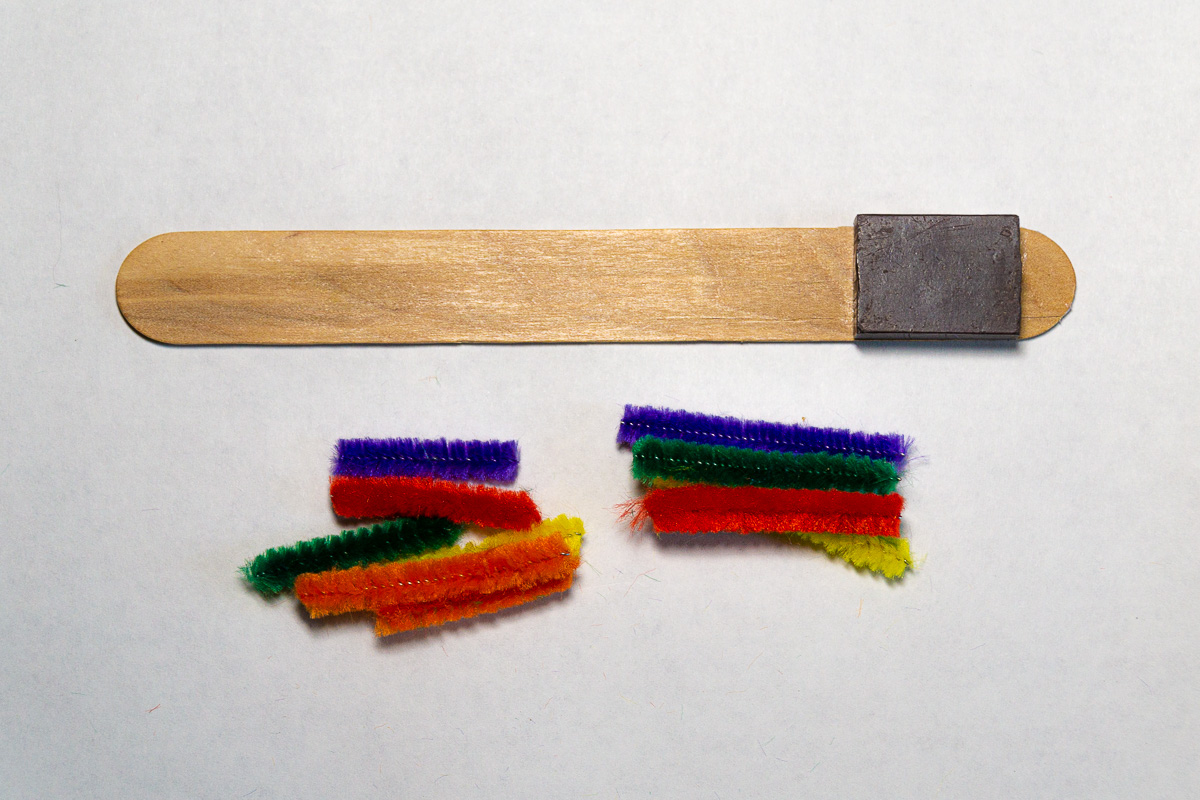
Everyone loves a good magic trick, and sometimes Science can look like magic. This simple activity can teach preschoolers about magnets (with a magical twist.)
- Pipe Cleaners
- Scissors
- A magnet
- A tongue depressor (or popsicle stick if the magnet is smaller)
- Glue
- A plastic container or empty (and clean) bottle
To make some magnetic magic, follow these steps:
- Glue a fridge magnet to a wide tongue depressor to make the “magic (magnetic) wand.”
- Cut a bunch of colored pipe cleaners into 1-inch lengths
- put them into a clear plastic box or bottle.
- Move the wand along the side of the box and watch the “magic” as the pipe cleaners move along with it!
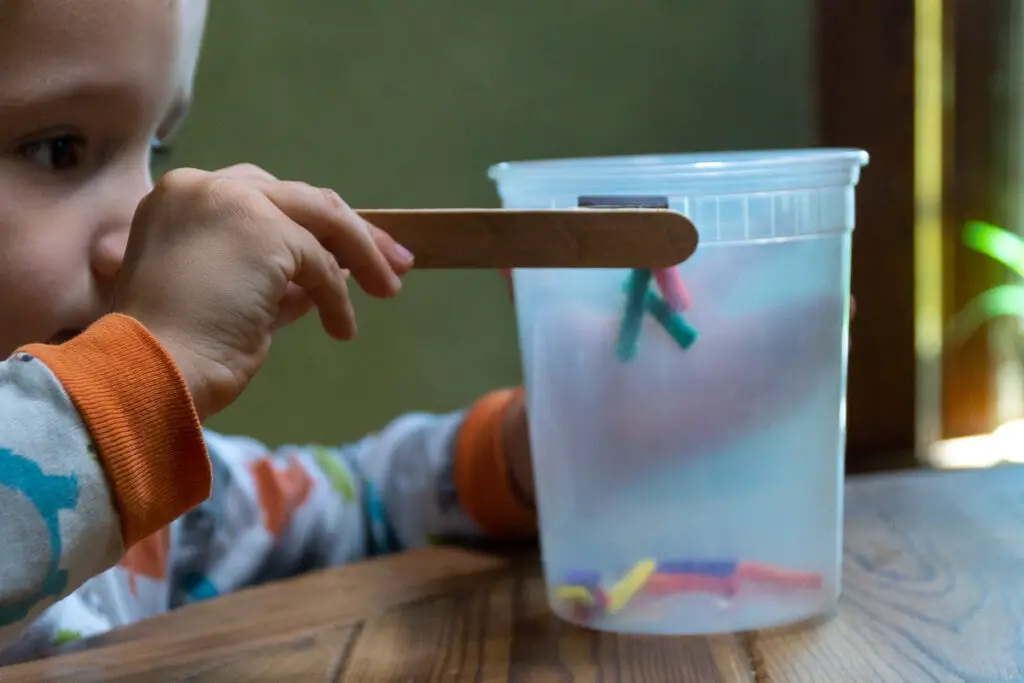
Kids learn that magnets attract some types of metals and that pipe cleaners have metal inside them. The magnet pulls the pipe cleaners towards it, and the magnetic force enables it to pull the pipe cleaners around the box.
Make A STEM Balance Sculpture With Pipe Cleaners
This combines engineering and mathematics as children learn to build a structure and understand weights and balancing. It would be suitable for elementary school children. The same lesson could be taught to preschoolers, though they may need some help with the construction.
You will need:
- Cardboard
- A paper towel tube
- Paint
- Hot glue
- Pipe cleaners
- Beads
- A 12-inch skewer.
- Cut a 5-inch square from the cardboard and a bunch of small shapes.
- Paint the square, the shapes, and the tube and leave them to dry.
- Flatten one side of the tube and staple it closed.
- Cut a V in the middle of the flattened end to form the fulcrum.
- Glue the other end of the tube to the 5-inch square of cardboard.
- Wrap the pipe cleaners around the skewer and thread beads and shapes around the skewer.
Now for the balancing: Have the kids adjust the number and position of the shapes and beads until the skewer is perfectly balanced.
Make A Light-Up Pipe Cleaner Circuit
Here students learn to make a basic electrical circuit that features the technology aspect of STEM subjects. For this activity, you’ll need:
- 2 pipe cleaners with the material shaved from the tips
- about 6 extra pipe cleaners)
- a lithium button battery
- 2 paper clips
- a rubber band
- an LED light with curled anode and cathode legs
To make a circuit from pipe cleaners, follow these steps:
- Attach one end of each shaved pipe cleaner to a paper clip.
- The other raw wire end of the pipe cleaner gets attached to the LED light.
- Touching the paper clips to both sides of the battery should make the light come on.
- Connect one paper clip to the battery with a rubber band.
The “on/off switch” works by touching the second paper clip to the battery, which completes the circuit.
Make A STEM Activity Pipe Cleaner Bug With Light-Up Eyes
This STEM activity is an extension of the basic pipe cleaner circuit activity above. This teaches technology via the circuit and science through the study of insects. Using two LED lights attached to the battery for the eyes, kids can use the simple pipe cleaner circuit to make an insect of their choice.
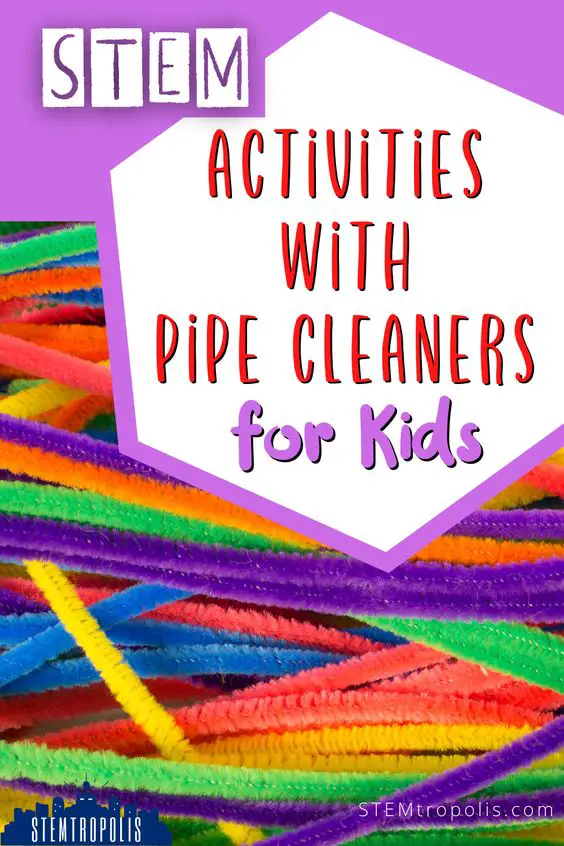
Wrap Up – STEM Activities with Pipe Cleaners
Pipe cleaners are a fun and inexpensive way to introduce kids to STEM concepts like science, technology, engineering, and math. The best part is you only need simple supplies and common household items for most of these fun ideas. Check out our post on Activities with Household items for some more ideas and fun!
Pipe Cleaners make a great addition to any crafting station or makerspace! Make sure you’ve got everything you need to make your own STEM makerspace!
More Fun Activities
Looking for more fun activities? Sign up for access to our free printable library for some awesome activities for home, home school, or classroom:



